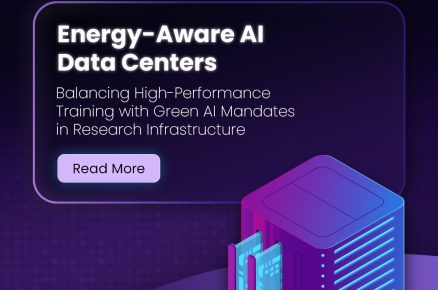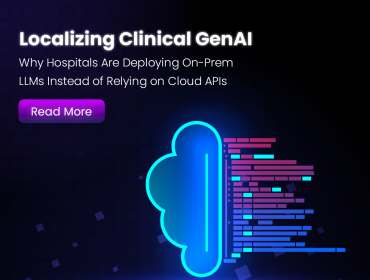High-Performance Computing (HPC) has transformed the landscape of scientific research, engineering simulations, and data-intensive applications. The power of HPC lies in its ability to harness vast computational resources to solve complex problems quickly and efficiently. Traditionally, HPC clusters were expensive to set up and maintain, limiting their accessibility to large organizations and research institutions. However, with the advent of cloud computing, HPC deployment has become more accessible, cost-effective, and scalable. This article will delve into the intricacies of mastering HPC deployment on cloud platforms, offering potent insights to help you make the most of this powerful technology.
Understanding HPC on the Cloud
Before we dive into mastering HPC on the cloud, let’s briefly define what HPC is and why cloud deployment is a game-changer.
What is HPC?
HPC, or High-Performance Computing, refers to the use of supercomputers or computer clusters to solve complex computational problems. These problems often involve massive datasets and require extensive computational power and memory. HPC systems are used in various fields, including weather forecasting, molecular modeling, financial modeling, and even entertainment (for rendering and special effects).
Cloud Computing and HPC
Cloud computing offers an efficient way to deploy HPC clusters. Instead of investing in physical infrastructure, organizations can rent computational resources from cloud service providers like AWS, Azure, or Google Cloud. This approach provides several key advantages:
- Scalability: Cloud platforms allow you to scale your HPC resources up or down as needed. This flexibility ensures you’re not overpaying for idle resources.
- Cost-Efficiency: Pay-as-you-go pricing models mean you only pay for the resources you use. This eliminates the need for capital expenditures on hardware.
- Global Reach: Cloud providers have data centers worldwide, enabling you to deploy HPC clusters close to your users, reducing latency.
- Resource Variety: Access to a wide range of virtual machine types and GPU configurations allows you to tailor your HPC setup to your needs.
Now that we understand the basics let’s explore the steps to master HPC deployment on the cloud.

Mastering HPC Deployment on Cloud Platforms
Define Your HPC Requirements
The first step in mastering HPC deployment on the cloud is to define your requirements clearly. Understand the nature of your workloads and determine the computational resources you need, including CPU cores, memory, and GPUs. A clear understanding of your requirements will help you choose the right cloud provider and configure your cluster optimally.
Choose the Right Cloud Provider
Selecting the right cloud provider is crucial. Each provider offers its own set of services, pricing models, and regions. Consider factors such as geographic proximity to your users, service reliability, and cost when making your choice.
Set Up Networking and Security
Effective networking is vital for HPC on the cloud. Configure a Virtual Private Cloud (VPC) or equivalent network isolation to secure your resources. Ensure high-speed, low-latency connections between cluster nodes. Implement security best practices, including firewalls, identity and access management, and encryption, to protect your data and resources.
Choose the Right Instance Types
Cloud providers offer various instance types optimized for different workloads. Analyze your HPC requirements and choose the instance types that offer the best balance of CPU, memory, and GPU resources for your tasks. Leverage spot instances or preemptible VMs to save costs if your workloads allow for interruptions.
Use Parallel Computing Frameworks
To fully leverage the power of HPC, use parallel computing frameworks like MPI (Message Passing Interface) or OpenMP. These frameworks enable your applications to efficiently distribute workloads across multiple nodes, maximizing computational efficiency.
Optimize Storage
Selecting the right storage solution is critical for HPC workloads. Use high-speed, low-latency storage options like SSDs or NVMe disks for temporary data storage during computations. For long-term storage, consider object storage solutions.
Monitor and Optimize Performance
Continuous monitoring and optimization are essential for maintaining HPC efficiency on the cloud. Use cloud-native monitoring tools or third-party solutions to track resource utilization, detect bottlenecks, and optimize your cluster’s performance.
Implement Data Management and Workflow Automation
Efficient data management and workflow automation are key to HPC success. Implement data pipelines, job scheduling systems, and automation scripts to streamline your HPC workflows. Tools like Kubernetes and Apache Airflow can be invaluable in this regard.
Backup and Disaster Recovery
Data integrity is paramount in HPC. Implement robust backup and disaster recovery strategies to ensure your data is protected. Use snapshots, replication, and off-site backups to mitigate the risk of data loss.
Cost Management
Finally, manage your costs diligently. Use cost monitoring tools provided by your cloud provider to analyze spending patterns and identify cost-saving opportunities. Consider reserved instances or long-term commitments to reduce costs further.

Conclusion
Mastering HPC deployment on cloud platforms is a journey that combines technical expertise with strategic decision-making. By understanding your requirements, choosing the right cloud provider, optimizing resources, and implementing best practices, you can unlock the full potential of HPC in the cloud. Whether you’re a researcher pushing the boundaries of science or a business seeking to accelerate innovation, HPC on the cloud offers the tools and scalability you need to succeed. So, take the leap into the world of high-performance computing on the cloud and empower your organization to achieve new heights of computational excellence.











